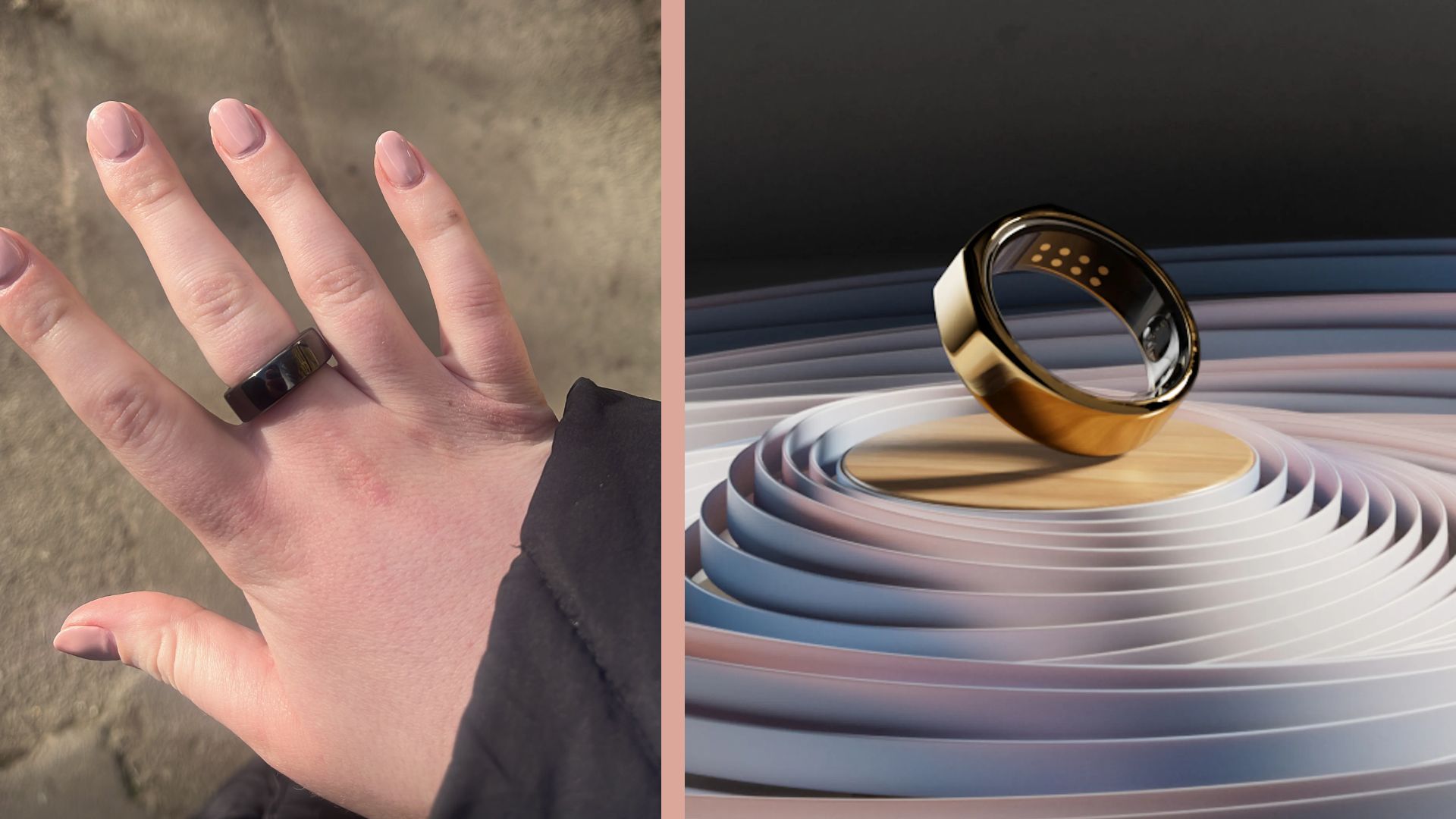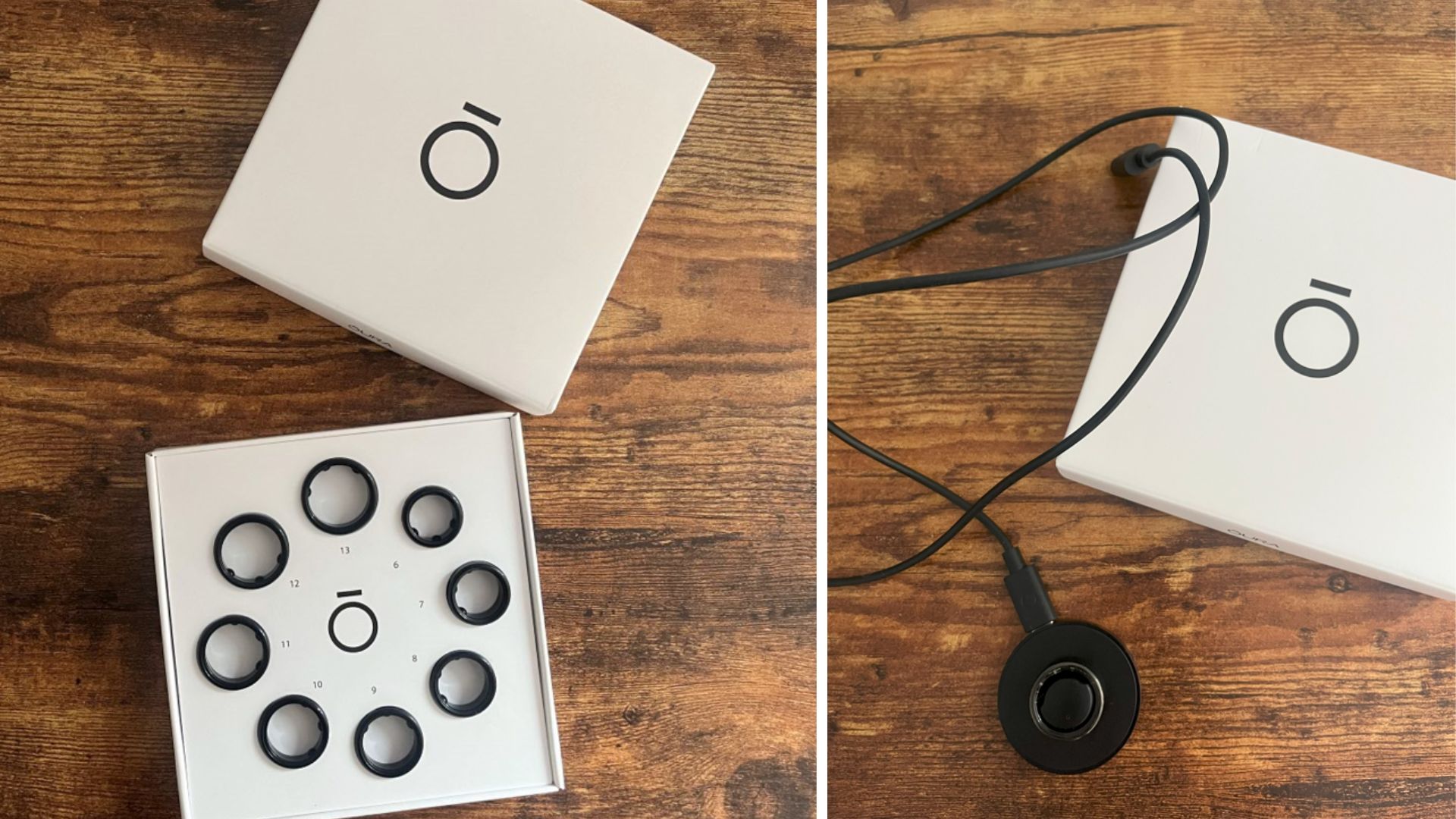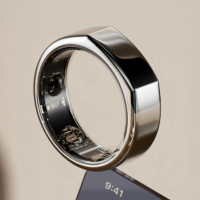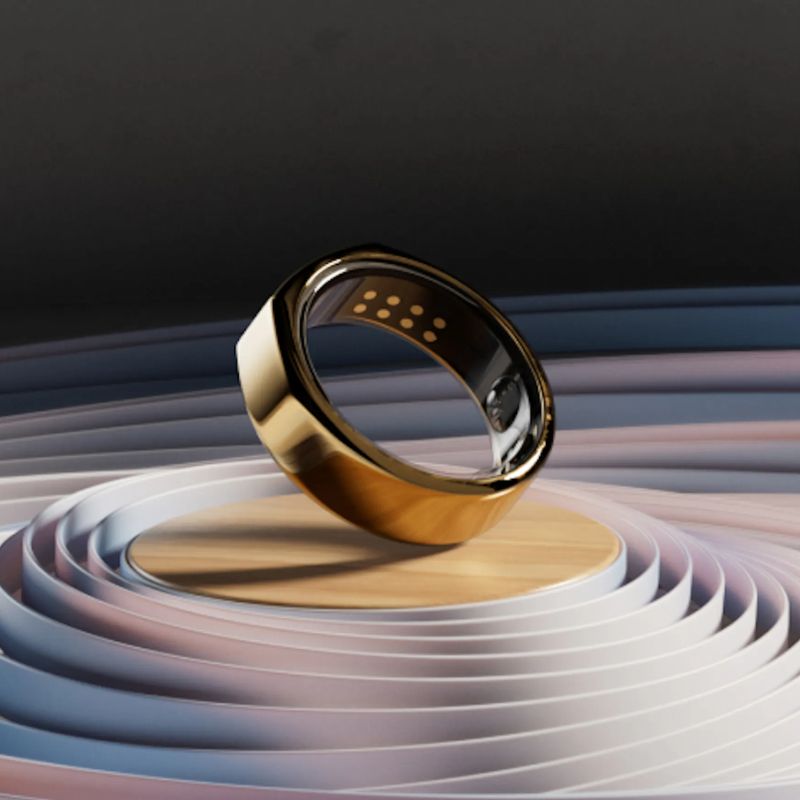I tried the Oura Ring Gen 3 for a month - here's what I learnt about this celebrity-favourite fitness tracker
After four weeks of wearing the Oura Ring 3, I learnt why celebs like Jennifer Aniston and Gwyneth Paltrow use this unique fitness tracker

Comfortable, sleek, stylish and one-of-a-kind, the Oura Ring 3 thinks outside the box
-
+
Almost unnoticeable when wearing
-
+
Unique insights into sleep
-
+
Prioritises rest and recovery as well as fitness
-
-
The subscription plan means continuous costs
Why you can trust Woman & Home

The Oura Ring Generation 3 is the Finnish tech company’s latest innovation of the smart device. Loved by A-listers and athletes worldwide, is this sleek and compact ring really worth the hype? Let’s find out…
The smart ring has garnered a lot of attention in the last few years, thanks to the likes of wellness guru Gwyneth Paltrow and A-listers Jennifer Aniston, Eva Longoria and Rosario Dawson who have been spotted wearing the ring. But, sceptics question whether this compact device can accurately track a huge range of health metrics and compete with the best fitness trackers - so, of course, I had to put it to the test to bring you this Oura Ring 3 review.
As a health journalist, I’ve tried and tested many fitness wearables in my time, from the best Fitbits to the latest Apple Watch. But, the Oura Heritage is the first smart ring I’ve got my hands on and I questioned whether this ring could monitor my health and help me optimise my sleep and activity. Here’s what I learned after putting the Horizon Oura Ring Generation 3 to the test for 30 days…
In 2024, the Oura Ring 4 was released. This is now the latest model of the smart ring.
Oura ring review: An overview
An Oura Ring is a smart ring that tracks health metrics and delivers personalised data and insights about sleep, recovery and activity to support overall health. The Heritage ring, one of two styles available, was originally designed as a sleep tracker to explore how sleep impacts all areas of our health - from fertility to productivity and even athletic performance. Since then, the brand has evolved to take a more holistic approach to health, still looking at sleep, but also activity, recovery, readiness and resilience. All in the hope that users will use the data to create healthy habits that make recovery a daily practice.
When it comes to the design, it’s compact, sleek and subtle, unlike many of the chunky watches and trackers out there. If, like me, you often wear rings anyway, you will barely notice this device on your hand as you go about your day. The pack comes with the ring, instructions, and a USB charging device that plugs into a wall socket and looks like a regular ring holder.

Before buying the Oura Ring, you need to use a sizing kit (left) to get the right fit. The ring also comes with a USB charger.
Oura ring review: Specifications
- RRP: From £299
- Size: 7.9mm in width x 2.55 thickness
- Weight: 4g to 6g, depending on chosen size
- Material: Durable titanium with a PVD Coating
- In-built GPS: No - must carry phone to log distance, pace, and other metrics
- Battery life: 7 days
- Waterproof: Up to 100m
Oura Ring (Heritage): From £299 at John Lewis
The Oura Ring is made with titanium, available in various metallic colourways (including Silver and Gold), in two different styles - and now available to buy at John Lewis.
What does the Oura Ring do?
Tracks sleep
I am fascinated by sleep and always looking to know how to sleep better, so I was very excited to see what I would wake up to after my first night wearing the Oura Ring - and that excitement hasn’t faltered since.
For me, Oura’s sleep tracking truly sets it apart from other devices. Using an infrared LED light, the device tracks a range of metrics as you snooze, from your resting heart rate to sleep time and even sleep cycles totalling how much REM and Deep Sleep you’ve banked each night. It also monitors blood oxygen levels, breathing regularity and heart rate variability to give you an overall picture of your sleep.
What I found most interesting were the Restfulness and Latency trackers. Latency looks at how long it takes you to fall asleep (ideally you should aim for anywhere between 15 to 20 minutes), while the former tracks your wake-ups and excessive movements in the night. In my 30 days of tracking, I noticed that I know how to fall asleep fast - often within five minutes - but I discovered this could be a sign of overtiredness - a finding that certainly rings true for me after a busy month with lots of travel.
Monitors your activity
When it comes to movement, Oura focuses on finding a balance between activity, inactivity and rest - and this is one of my favourite elements of the app. It’s not about hitting 15,000 steps every day. As the app has a greater overall view of what’s going on, it will adjust your daily targets depending on how much activity you’ve done in previous days and how much recovery your body may need.
Of course, as with all fitness trackers, it’s important to take these insights as guidance rather than gospel. If you wake up tired and you need to rest, but your app suggests you’re ready for a day full of activity, you should listen to your body and do what is right for you. On the other hand, having a device adjusting targets based on activity and recovery could be a helpful reminder to take it easy and rest.
As part of the brand’s holistic approach to health, all movement counts - from traditional workouts like running and HIIT to gardening and housekeeping. I’m guilty of spending long periods at my desk, so I loved that the app reminded me to move every hour and motivated me to get my steps in daily too.
Much like the newest Fitbit and newest Apple Watch, the Oura Ring has automatic activity detection. This feature cleverly detects your movement and can recognise up to 30+ activities. These activities will then pop up in your app with a suggested activity type, duration, and intensity, so all you have to do is confirm your movement to log it for the day.

The Oura Ring fits seamlessly into both casual and fitness environments.
Determines readiness and resilience
By using your sleep and activity data, Oura calculates a readiness score to indicate how well your body has recovered and how ready it is for activity that day. If your score is high, you are balancing sleep, activity and recovery well, but if you are consistently banking a low score it might be time to schedule in more rest.
The Resilience tracker is the latest feature from Oura that uses a 14-day average of your nighttime and daytime recovery, combined with your daytime stress load to determine your ability to withstand and recover from stress. Initially, my resilience was Strong but after a busy few weeks it started to lower, so I used this as a sign I needed to incorporate more meditation and breathwork into my day to help reduce and deal with stress better.
The Oura is one of the few smart devices that takes your temperature directly from the skin, a sensor that can reveal a lot about your recovery. The Fitbit Sense 2 and Inspire 3 also do this, along with Apple Watches and some Garmin devices, so it's worth weighing up Oura Ring vs Apple Watch and Oura Ring vs Garmin before making a final decision. I find it to be an incredibly useful feature as it can give insight into what's going on in the background of your body. Most impressively, the Oura Ring measures your temperature trends and changes in heart rate to flag when you might be getting ill, so you can take extra precautions. It can also tell you what stage of your menstrual cycle you are entering.

Rest mode (left) pauses insights, the Resilience Score (middle) determines how ready you are for the day, and your Activity homepage (right) reveals basic health metrics.
Supports overall wellbeing
Through the Explore section of the app, you can discover further resources, including guided meditations (some supplied by Headspace, one of the best mediation apps) and educational audio recordings, exploring everything from sleep to stress. I enjoyed using the sleep meditations but the resources are limited and I hope to see the brand adding more to this as it grows.
However, other fitness trackers also offer similar features. So, it's worth weighing up Oura Ring vs Apple Watch, for example, before making a final decision.
Can you buy Oura Ring in the UK?
Yes! The Oura Ring is now available to buy in the UK. You can buy directly from the website in GBP, and products are shipped from Europe based on where the order is coming from, or shop at John Lewis.
It’s worth noting that before you buy an Oura Ring, you’ll first need to order a sizing kit to get the right measurement. The kit comes with eight plastic rings in different sizes to help you find the perfect fit. Oura advises wearing your ring on your middle or ring finger for the greatest accuracy in your readings, and to ensure it’s snug but not too tight that it’s uncomfortable when you make a fist.
Where to buy Oura Ring
How much does the Oura Ring cost?
The Oura Ring starts at £299 - but after the initial purchase, you have to pay £5.99 a month to use the ring at its maximum capacity. The ring price goes up depending on which style you choose - Heritage or Horizon - and the finish you opt for - Black, Silver, Gold, etc.
If you're interested in fitness tracking via your finger, rather than your wrist, it may also be worth checking out the Samsung Galaxy Smart Ring. This is very similar to the Oura Ring in many ways but comes without the subscription fee.
While the price tag and continuing subscription make this one of the more premium fitness trackers I've tried, in my eyes, it's worth the money if you have the budget to spend. You can use your ring as soon as you activate your membership - with the first month free - and this monthly fee can be cancelled any time by going into the Accounts section of the Oura app.
Is the Oura ring useless without a subscription?
Much like many other unique fitness trackers, such as the WHOOP 4.0, the Oura Ring has a subscription-based business model. Without a subscription, you can only see your three daily scores in the app: Sleep, Readiness and Activity. While this will give you a snapshot of how you are sleeping and how your body is recovering from activity and stress, you won’t have access to further data or personalised insights and recommendations.
Without a subscription, you won’t be able to see the likes of your sleep cycles, activity, resting heart rate, HRV, respiratory rate or body temperature all of which provide context to those daily scores.
So, when considering whether to buy an Oura Ring, it's important to consider whether you can keep up the subscription cost too. However, you can still use the basic elements of the device at no additional cost.
Can I wear my Oura Ring in the shower?
Like with many other smartwatches and fitness trackers, you can wear your Oura Ring in the shower. In fact, this wearable is water-resistant up to 100 metres (which is double the waterproofing of similar premium devices) so you can swim comfortably while wearing your ring.
The brand also notes that the ring can tolerate extreme hot and cold temperatures, so you can wear it during wild swimming and sauna experiences too.
Oura Ring vs Fitbit
- Oura Ring doesn't have on-screen data: For those who want to check their stats in real-time on their device, follow workouts on-screen and even receive messages to their smartwatch, one of the many Fitbit types is best. But, I love that Oura is screen-free. It allowed me to disconnect from the constant notifications and metrics at the touch of a button, and still benefit from health insights and personalised advice when I actively and mindfully checked the app on my smartphone.
- The Oura Ring is comfortable and easy to wear: While Fitbits come with interchangeable straps so you can find a comfortable material for you, I often find my sensitive skin becomes irritated when I wear a fitness watch. So, for me, the ring was more comfortable and easy to wear. I didn’t have to take it off to shower or do the dishes and I barely noticed it on my fingers as I went about my usual daily tasks.
- Oura ring offers more detailed sleep insights: While Fitbit offers more detailed fitness stats, Oura excels with sleep insights and even provides data on sleep cycles. To get further insights into Fitbit’s sleep data, you must subscribe to a Fitbit Premium plan which is £7.99/month or £79.99/year.
- The Oura Ring has limited resources: The resources on the Oura Explore page are limited compared to the huge range of videos to support activity and recovery on Fitbit’s premium plan, from stretching classes and HIIT workouts to meditations and sleep stories.
Sign up to our free daily email for the latest royal and entertainment news, interesting opinion, expert advice on styling and beauty trends, and no-nonsense guides to the health and wellness questions you want answered.
Ciara McGinley is a meditation practitioner and health journalist. She qualified as a meditation teacher with the British School of Meditation in 2020 and is the founder of Finding Quiet, a series of classes, workshops and retreats that combine meditation practices and mindfulness techniques to make mindful living realistic in an always-switched-on modern world. She is all about bettering that mind-body connection but believes wellness looks different to everyone.
Ciara is also the former Health Channel Editor at woman&home and has covered all things health and wellbeing for years, from fitness to sleep to relationships.


